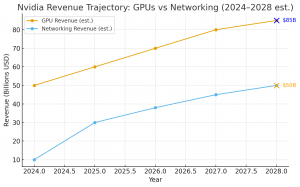It’s Friday 5th September 2025, and once again West Ham United is in the headlines for the wrong reasons. From the Fan Advisory Board’s vote of no confidence to national media calling this a “civil war”, supporters are rightly asking: what will make the difference this time?
Since the move to the London Stadium in 2016, fans have marched, boycotted, and protested — from the chaotic 2018 Burnley game pitch invasions to the peaceful Hammers United protests of 2020. The message has been loud, but change has been limited.
The difference now? Three new levers exist:
-
The Premier League’s Fan Engagement Standard (FES) makes clubs formally accountable.
-
Mainstream media are united in calling out governance failure.
-
Daniel Křetínský (27% shareholder) has reputational skin in the game, given his UK corporate interests like Royal Mail/IDS.
Together, this creates the strongest pressure triangle fans have had since 2016. Here’s a 7-point mini strategy that could turn pressure into results.
1. One-Line Unified Ask
Keep it simple:
“Resign executive roles. Appoint an independent CEO + Sporting Director. Publish a 3-year plan.”
Every placard, every chant, every banner, every interview should repeat this single achievable demand.
2. Aim the Message at Křetínský
He is the one owner who cares about reputation and international perception. Fans should draft an open letter, in English and Czech, addressed to him and his EP Group board, as well as the IDS/Royal Mail board. Circulate it via outlets like FT and Reuters to hit his PR pressure point.
3. Trigger the Fan Engagement Standard
Use the FES mechanism. The Fan Advisory Board can call for an extraordinary minuted meeting with the board-level fan engagement lead, citing the Premier League’s requirements. If the club refuses, escalate directly to the Premier League for non-compliance.
4. Peaceful Matchday Moments
Avoid 2018 chaos. Instead, opt for symbolism:
-
A 27th-minute “turn backs” protest (27 = Křetínský’s 27% stake).
-
Post-match five-minute silent sit-in with coordinated placards showing the one-line ask.
TV cameras can’t ignore disciplined, peaceful action.
5. Expose the Stadium Economics
The London Stadium is a weak flank. Loss-making, no naming rights deal, taxpayer-funded. Fans can submit Freedom of Information requests to the Greater London Authority and LLDC about losses, governance, and naming rights delays. Frame the issue as a taxpayer subsidy for bad leadership.
6. Scoreboard the Promises
Launch a simple “West Ham Engagement Tracker” website: list FES promises, current actions, deadlines, and whether the club is on or off track. Share it before matches with journalists. Public scoreboards turn words into accountability.
7. Brand the Movement Clearly
Everything under one banner:
“West Ham United, Professionally Run.”
Family-safe, liaised with police, consistent visuals. This is how you win media coverage and neutral public support.
Conclusion
For nearly a decade, West Ham fans have fought for better. What’s different now is the alignment of formal standards, media scrutiny, and shareholder pressure. If supporters synchronise these levers — with one unified ask and disciplined action — then real governance change at West Ham is finally within reach.

